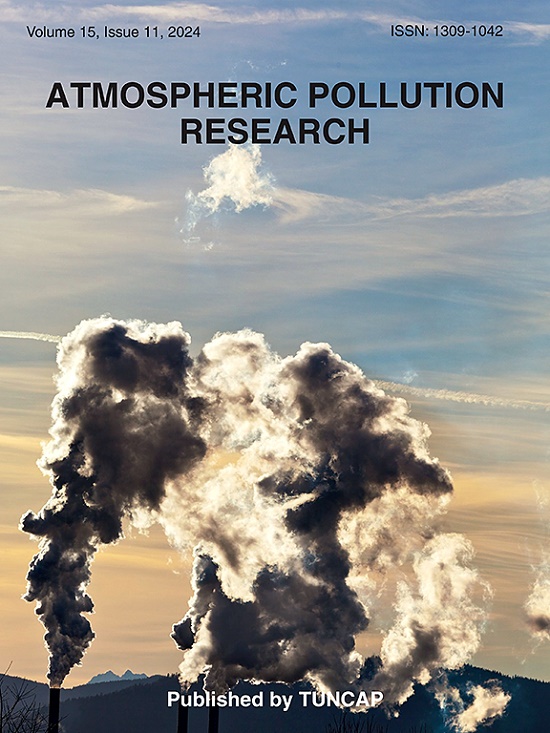基于深度神经网络模型的气候数据变异对PM2.5浓度时空模拟的影响
IF 3.5
3区 环境科学与生态学
Q2 ENVIRONMENTAL SCIENCES
引用次数: 0
摘要
由于气象参数对PM2.5颗粒的形成、浓度和扩散的影响,因此在PM2.5时空模型中被用作特征。本研究利用优化的深度神经网络(DNN)模型,利用不同的方法对不同的气象数据集进行重新采样,并对其预测PM2.5浓度的有效性进行了研究。结果表明,三次样条重采样的欧洲中期天气预报中心(ECMWF)数据集作为DNN模型中的气象特征,在预测PM2.5值方面效果最好,MAE和RMSE分别为3.597和5.363 μg/m3。在各DNN模型中,日、气溶胶光学深度和温度是基于其SHAP值预测PM2.5浓度影响最大的特征。讨论了各种重采样方法和数据集组合的重采样值的分布和相关性。本研究还讨论了改进时空pm2.5浓度模拟过程的未来探索。本文章由计算机程序翻译,如有差异,请以英文原文为准。

Impact of climate dataset variability on spatiotemporal modelling of PM2.5 concentration using deep neural network models
Meteorological parameters have been used as features in spatiotemporal PM2.5 models owing to their influence on the formation, concentration, and dispersion of PM2.5 particles. This study investigated the effectiveness of various meteorological datasets, resampled using different methods, in predicting PM2.5 concentrations with optimized deep neural network (DNN) models. The results showed that a cubic-spline-resampled European Centre for Medium-Range Weather Forecasts (ECMWF) dataset, as a meteorological feature in the DNN models, produced the best results in predicting PM2.5 values with MAE and RMSE values of 3.597 and 5.363 μg/m3, respectively. Day of the year, the aerosol optical depth, and temperature were the features with the most significant influence in predicting PM2.5 concentrations based on their SHAP values for each DNN models. The distribution and correlations between resampled values of each resampling method and dataset combination were discussed. This study also discusses future exploration for improving the spatiotemporal PM2.5-concentration modelling process.
求助全文
通过发布文献求助,成功后即可免费获取论文全文。
去求助
来源期刊

Atmospheric Pollution Research
ENVIRONMENTAL SCIENCES-
CiteScore
8.30
自引率
6.70%
发文量
256
审稿时长
36 days
期刊介绍:
Atmospheric Pollution Research (APR) is an international journal designed for the publication of articles on air pollution. Papers should present novel experimental results, theory and modeling of air pollution on local, regional, or global scales. Areas covered are research on inorganic, organic, and persistent organic air pollutants, air quality monitoring, air quality management, atmospheric dispersion and transport, air-surface (soil, water, and vegetation) exchange of pollutants, dry and wet deposition, indoor air quality, exposure assessment, health effects, satellite measurements, natural emissions, atmospheric chemistry, greenhouse gases, and effects on climate change.
 求助内容:
求助内容: 应助结果提醒方式:
应助结果提醒方式:


